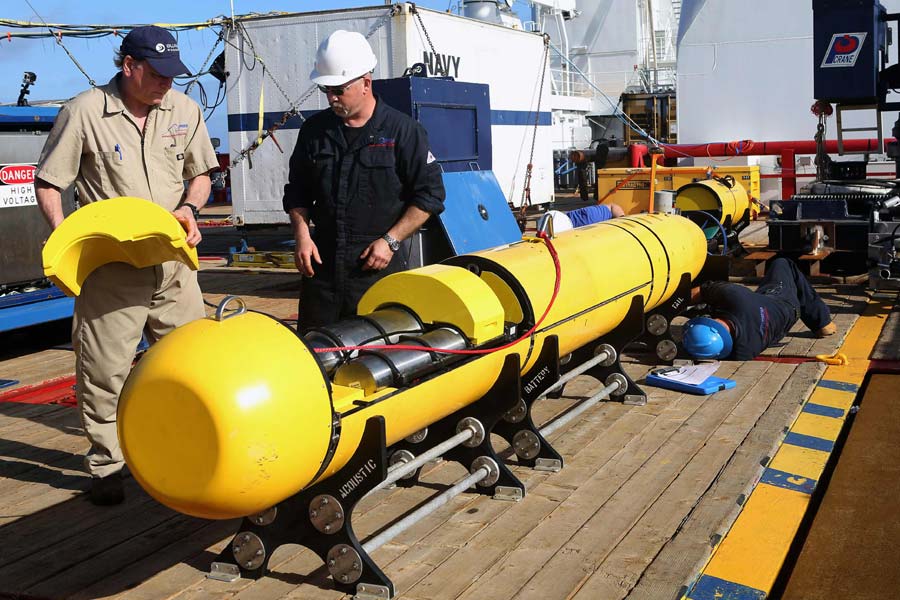| Latest News | Search effort | Families' reaction | Timeline | Reporter's log |
| Infographic | Doubts | Airlines' statement | Photos | China's perspective |
 |
|
Phoenix International workers Chris Minor (R) and Curt Newport inspect the US Navy?s Bluefin 21 autonomous underwater vehicle (AUV) before deployment in the southern Indian Ocean to look for the missing Malaysia Airlines flight MH370 in this handout picture released by the Australian Defence Force April 15, 2014. A US Navy underwater drone sent to search for a missing Malaysian jetliner on the floor of the Indian Ocean had its first mission cut short after exceeding its 4.5 km (2.8 mile) depth limit, Australian search authorities said on Tuesday.The launch of the Bluefin-21 autonomous underwater vehicle on Monday marked a new phase in the six week search for Malaysia Airlines MH370 which disappeared on March 8 and is presumed to have crashed thousands of kilometres (miles) off course with the loss of all 239 people on board.[Photo/Agencies] |

Search crews sent the Bluefin 21 deep into the Indian Ocean on Monday to begin scouring the seabed for the missing Malaysia Airlines Boeing 777 after failing for six days to detect any signals believed to be from its black boxes.
But after only six hours of its planned 16-hour mission on the sea bed, the autonomous underwater vehicle exceeded its maximum depth limit of 4,500 meters (15,000 feet) and its built-in safety feature returned it to the surface, the search coordination center said in a statement on Tuesday.
What if anything it might have discovered during the six-hour search was still being analyzed, the center said.
The Bluefin 21 will resume the search Tuesday when weather conditions permit, it said.
Search authorities knew that the primary wreckage from Flight MH370 was likely lying at the limit of the Bluefin's dive capabilities. Deeper diving submersibles have been evaluated, but none is yet available in the search area.
Meanwhile, officials were investigating an oil slick about 5,500 meters (3.4 miles) from the area where the last underwater sounds were detected, said Angus Houston, the head of a joint agency coordinating the search off Australia's west coast.
Crews have collected an oil sample and are sending it back to Australia for analysis, a process that will take several days. Houston said it does not appear to be from any of the ships in the area, but cautioned against jumping to conclusions about its source.
The Bluefin 21 can create a three-dimensional sonar map of any debris on the ocean floor.
The search moved below the surface after crews picked up a series of underwater sounds over the past two weeks that were consistent with signals from an aircraft's black boxes, which record flight data and cockpit conversations. The devices emit "pings" so they can be more easily found, but their batteries only last about a month and are now believed dead.
 |
 |
|
|
|
|
|
|
|
|